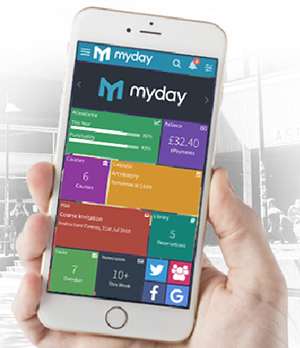Digital Academic Organizer Provides One-Stop Access to Campus Resources
U.K.-based Collabco is now offering its myday app for higher education students in the United States.

Myday has an interface accessible via desktop or mobile that pulls information from many different university systems.
Liverpool, England-based technology firm Collabco will now offer its myday digital academic organizer in the United States. The app provides students with one-stop access to all university content and education resources.
Myday features an interface accessible via desktop or smartphone that pulls information from many different systems, including the university's learning management system, student management system, e-mail, calendars, news, library services and a host of other content. Company officials said it can offer information on everything from laundry scheduling and bus routes to social media updates and homework assignments.
The portal allows the university to decide what content it wants to deliver to its students by simply "plugging in" that information to myday to be delivered via the app. Likewise, students can use a single log-in and customize their own portals as well to include whatever information they deem important and useful to them.
Other features include:
- Multiple customizable environments that aim to engage certain audiences, like prospective students, enrolled students, continuing education students, staff members and alumni;
- A mobile app that can be uniquely branded for the particular university;
- Integration with other tools like Moodle, D2L, Blackboard, Canvas and Office 365;
- Multiple-language support for international students; and
- A support team with myday staff members guiding colleges through the setup process that helps integrate it with existing applications and systems.
"Colleges and universities are always looking for new ways to attract and retain students in an increasingly digital world," said Collabco CEO Mark Francis. "The key to this is to make education a highly personalized, engaging experience for each individual."
For more information, visit the Collabco site.
About the Author
Michael Hart is a Los Angeles-based freelance writer and the former executive editor of THE Journal.